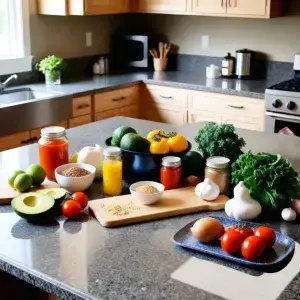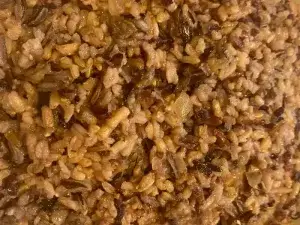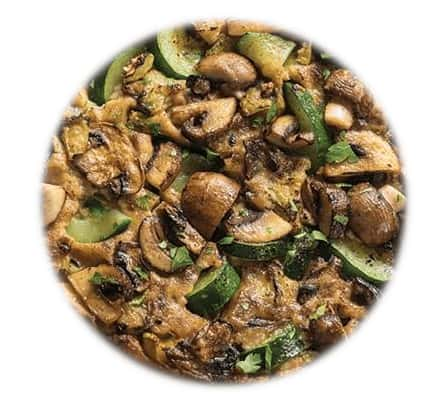Gluten free appetizers soups and side dishes
Appetizers, soups and side dishes are deeply ingrained in culinary and cultural traditions. Each with its own story that was created over the millennium. Each generation and culture puts its twist on these classic parts of the meal.

Appetizers
Starting with the ancient civilizations of, Rome and Greece, lavish feasts were often started with small, savory dishes to stimulate the appetite. In Medieval Europe meals would often begin with “hors d’oeuvres”. The Renaissance saw recipes that included pâtés, terrines, and assorted canapés. Colonial America appetizers were influenced by Native America and European culture. The modern era saw appetizers that included stuffed mushrooms, deviled eggs, and the all-famous and my favorite pigs in the blanket. Israeli meals have a tradition of starting with a variety of salads called sallatim to start a meal.
Soups
Soups have also origins that date bake to ancient Egypt. With time soups developed from simple broths to a staple of in the Middle Ages and were eaten by peasants and nobility alike. The Renaissance saw soups become thicker and richer with the addition of meat. The French invented the idea of pureed soups. Colonial America saw the development of chowders and stews. Today in Israel, soup is mostly consumed in winter, with many restaurants offering orange or lentil soup. Many traditional Sabbath meals start with chicken soup regardless of the time of year.
Side dishes
Side dishes have been a part of human diets since ancient times. In early civilizations such as Mesopotamia, Egypt, and Greece, meals often consisted of a combination of staple foods like grains, vegetables, and legumes, served alongside main courses of meat or fish. During Medieval Times Nobility in medieval Europe enjoyed feasts featuring a wide array of side dishes such as roasted vegetables, fruits, pickles, and sauces. During the Renaissance side dishes continued to evolve, with a greater emphasis on presentation. The Industrial revolution canned and packaged side dishes became more common. In Israel salads or sallatim are not only appetizer but side dishes along with many rice dishes.
My gluten free recipes for appetizers, soups, and side dishes
As I had mentioned on the previous page we keep a Kosher house. The word “kosher” has become associated with the connotation of “proper” or “acceptable” in English. However, kosher laws derive from the Bible and are expounded upon in the Talmud and other Jewish tradition codes.
We define food as meat, dairy or pareve. Foods that are meat are either chicken, beef or lamb, dairy is any food that has dairy in and pareve are foods which have neither meat or dairy such as fruits, vegetables, eggs and other items.
This page is dedicated to appetizers, soups and sides.
I hope you enjoy the recipes as much as my family does .
My favorite recipes for Gluten free appetizers soups and side dishes
Gluten Free Zucchini in Tomato Sauce
Ingredients:
4-6 zucchinis if available I like to mix the dark green with the light green
2 large onions
2 1/2 cups of tomato sauce
2 heaping table spoons of frozen minced garlic
1 heaping tablespoon of Italian seasoning
1 heaping tablespoon of sugar
salt and white pepper
Instructions:
I use the same pot for sauteing the onions as I do to cook the recipe.
- dice onions into small pieces
- cover the bottom of the pot with olive oils
- place diced onions into pot
- saute on low flame be sure to mix the onions so they do not burn
- when onions are mostly cooked add minced garlic
- chop 4-6 zucchinis into either circles or small pieces
- once onions are sauteed add zucchini into pot
- add tomato sauce to pot
- add Italian seasoning to pot
- add sugar to pot
- sprinkle salt and white pepper to taste
- diced into small pieces add to a frying
- Let simmer on a low flame for at least 45 minutes to soften the zucchini stirring occasionally
Gluten free mushroom, onion and garlic wild rice
Ingredients:
2 dry cups of the wild rice of your choice I like the Lundberg brand.
2 medium-large onions
1/2 bag of frozen mushrooms or 2 containers of fresh mushroom
2 heaping table spoons of frozen minced garlic
olive oil
salt and white pepper
Instructions:
I use the same pot for sauteing the onions as I do to cook the recipe.
1. dice onions into small pieces
2. defrost the mushroom (I cheat and use the microwave) or wash and clean the mushroom before slicing
3. cover the bottom with olive oil

4. place the diced onions onto the olive oil and then cover the onions with more olive oil
5. lightly salt and pepper the onions
6. cook onions on a low flame stirring occasionally until they are almost translucent
7. add the mushroom and the garlic
8. continue to sauté until all of the veggies are completely cooked and very soft
9. pour the cooked vegetables into a bowl and set to the side
10. cook the wild rice per the package’s ingredients. (most rice requires 2 cups of water to every cup of rice) I add about 1/2 teaspoon of salt to the water
11. after the rice is done cooking pour the vegetables back into the pot and mix the rice and vegetables together
Serve warm and enjoy, goes great with fish, beef or poultry
Gluten Free Zucchini-Mushroom Kugel
Adapted from a recipe on Kosher.com
Ingredients:
4 zucchinis
2.5 – 3 cups of frozen mushrooms, sliced
about a teaspoon salt
3 eggs
4 tablespoons Potato Starch
3 tablespoons onion soup mix
3 tablespoons sugar or honey
tablespoons Olive Oil

1. quartered and slice the zucchinis
2. defrost the mushrooms
3. cover the bottom of the pan with olive oil place the mushrooms and zucchini over the oil
4. sprinkle salt over the vegetables about a teaspoon
5. sauté for 10-15 minutes
6. preheat the over to 350 Fahrenheit / 177 Celsius
6. drain the mushrooms and zucchini mixture
7. pour into a mixing bowl
8. add potato starch, onion soup mix, sugar or honey and eggs into a large mixing bowl
9. mix together
10. pour mixture into a oiled nine-inch (20-centimeter) round baking dish
11. Bake for one hour
Contact
GlutenFreeIsrael.com
All Rights Reserved 2024
Website design, maintenance and SEO managed by
